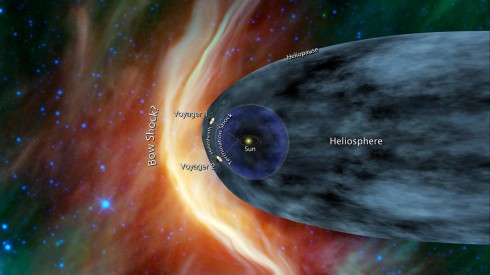
The Voyager 1 spacecraft is rapidly approaching the space between the stars, where the Sun’s solar wind is pushed back by the interstellar magnetic cloud.

How far will it go? The spacecraft have enough power to last until 2020, when it will be about 20 billion kilometers from the Sun (it’s now about 17.8 billion km away). In 40,000 years it will drift “within 1.6 light years … of AC+79 3888, a star in the constellation of Camelopardalis” that’s about 17.6 light years away.
Consider the 40,000 years it will take Voyager to travel 17.6 light years, and the distance to Keppler 22-b, a recently discovered “Earth-like” planet that’s about 600 light years away.

Keppler 22-b is in the liquid water zone of it’s solar system: far enough away from its sun that water on its surface will not just boil away from the heat, yet close enough that the water does not just freeze solid instead. Liquid water is a key necessity for all life as we know it.
cool would like to visit it someday. will need to when the sun goes out.